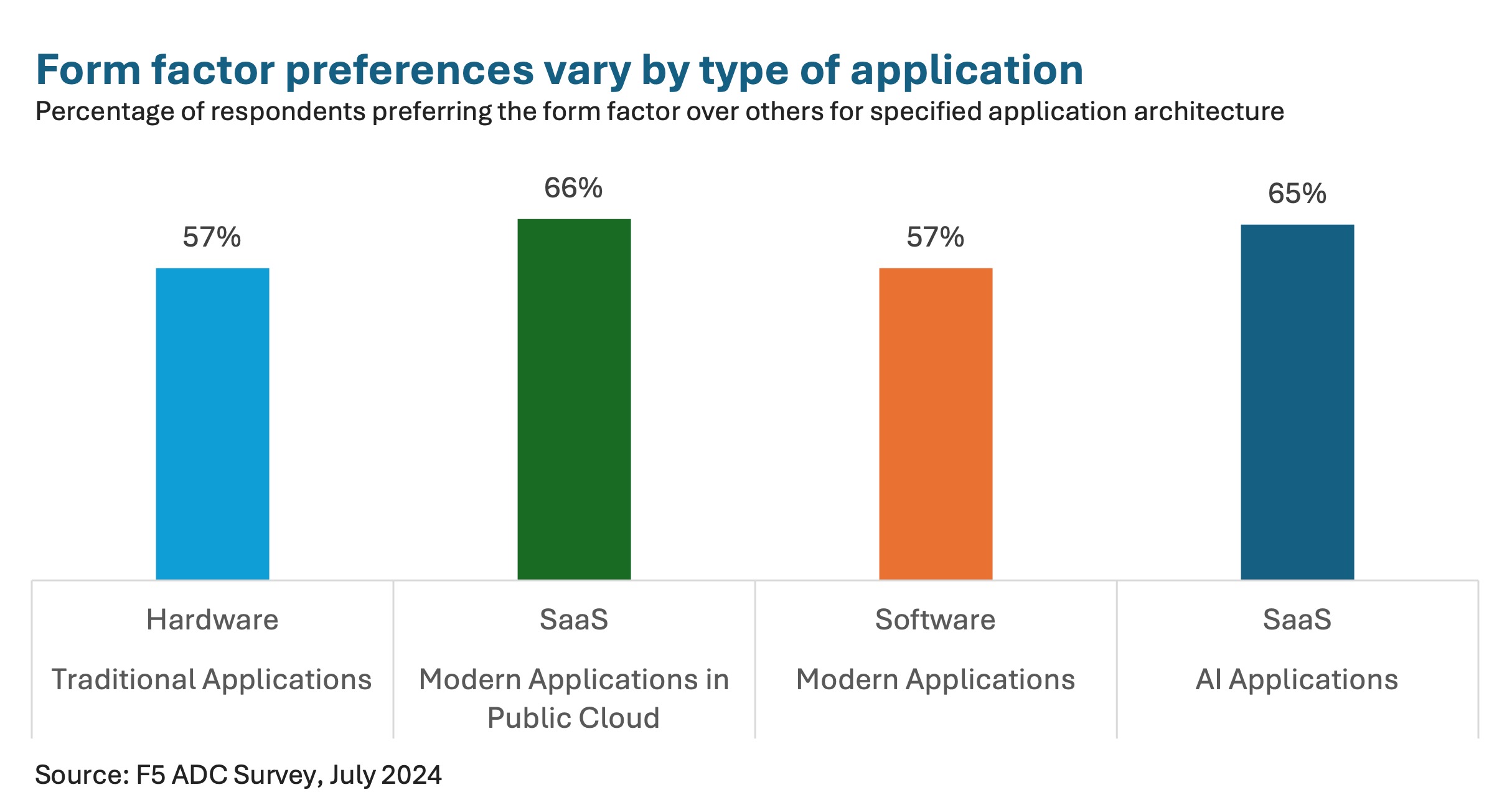Hybrid: The Future of Application Delivery and Security
One size does not fit all for application delivery and security. So says our latest research.
Way back in the history of the Internet—when I was still a wee lass—the entire application delivery and security industry was built on hardware. When cloud computing began to explode, the focus shifted to software. Virtual machines became the new form factor and, shortly thereafter, containers!
Rapid digitization has driven the industry toward SaaS, with a focus on delivering services that span not only multiple locations but reach a global audience.
Each new generation of application delivery and security generally supported only the latest form factor at the time they entered. And some generations never evolved to support newer form factors. This leaves the marketplace with a mix of options that generally only support a subset of all the possible form factors available.
The problem with this is that one size does not fit all when it comes to…anything for the enterprise.
Hybrid IT Means Hybrid Everything
All our research over the past ten years, whether general or focused, continues to tell us the same thing. Organizations are hybrid, inside and out. Their application portfolios are hybrid, their IT estates are hybrid. Everything is hybrid, including their application delivery and security requirements.
In a recent research project, we asked some very specific questions about application delivery and security services such as where, in application architectures, they deployed them and in what form factor they preferred them.
The results were clear; organizations are still primarily driven to choose everything from location to application delivery and security based on the application and that drives the need for a mix of hardware, software, and SaaS delivery and security services.
Traditional applications are more likely to be located on-premises and leverage a hardware form factor for application delivery and security. Similarly, modern applications drive demand for a software form factor—either virtual machine or containers, and sometimes both—in all locations. When those modern applications are in a cloud, it drives organizations toward SaaS options.
And the emerging AI application architectures? They’re driving toward SaaS-based delivery and security.

This is true irrespective of the insertion point for delivery and security services in these application architectures. Whether north-south, east-west, or one of the emerging insertion points in the new AI compute complex, organizations clearly use the type of application to drive decisions regarding what form factor they will use to serve the scalability, performance, and security needs of that application.
What’s more, our research indicates that this holds true regardless of which delivery and security service they’re deploying. We asked about form factor preferences for a dozen different delivery and security services and the results were the same. API security for modern applications? Software. AI gateways for AI applications? SaaS, please. Any service for traditional applications? They want hardware.
Are there exceptions? Of course. But across the board the trend is clear: the application delivery and security portfolio of enterprises will be as hybrid as their application portfolios. And while modern applications have finally reached an inflection point and breached 50% of portfolios, it will be a while before traditional applications peter out—if they ever do. And of course, AI applications will only grow from here. Which means organizations will be using a mix of hardware, software, and SaaS to deliver and secure their applications for the foreseeable future.
So, if you ever wondered why F5 maintains all three options for its application delivery and security offerings—that’s hardware, software, and service—now you know. Because customers want and need them all to deliver and secure their heterogenous application portfolios.
